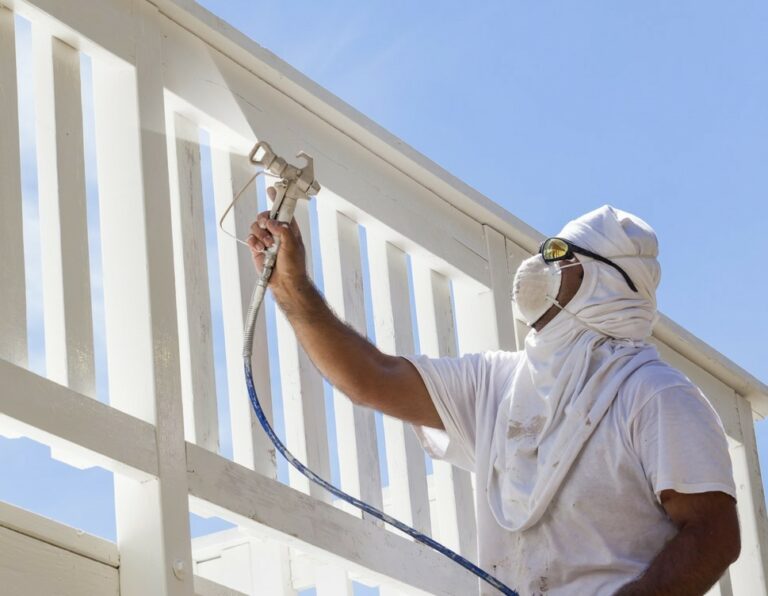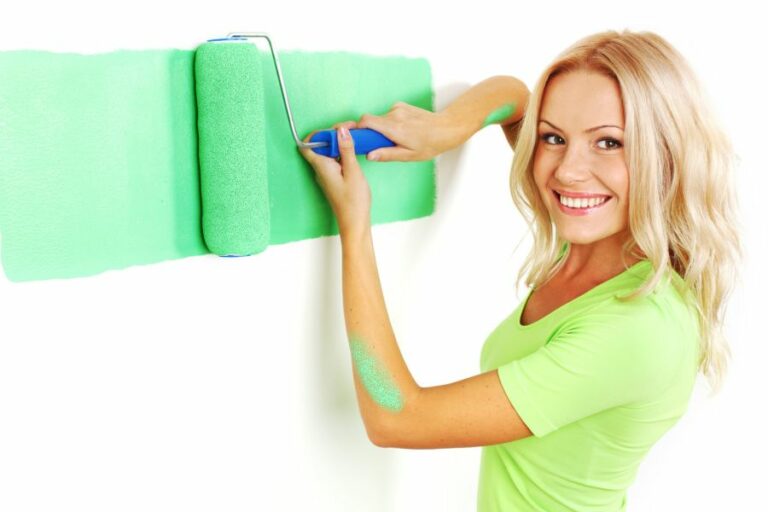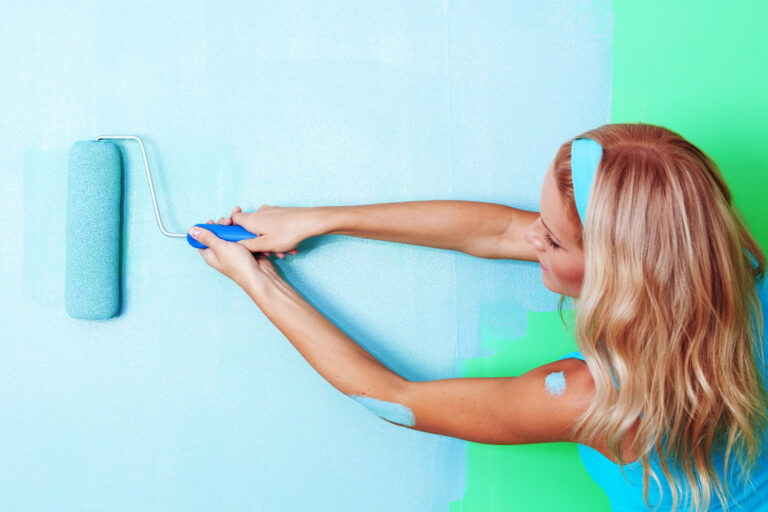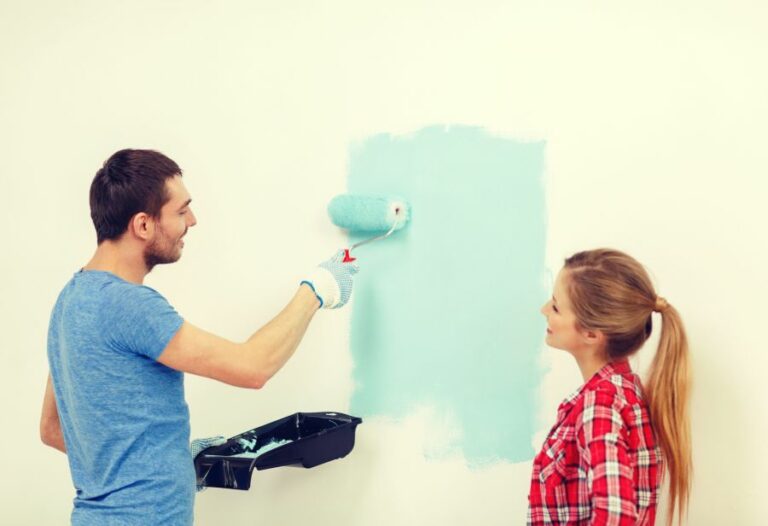How To Paint Outdoor Cushions, 25 Things You Should Know
Tired of your dull-looking patio? Breathe new life into your outdoor space by simply painting your cushions! This step-by-step guide will show you how to transform and personalize your outdoor cushions, making them look brand new while saving money. Discover expert tips on choosing the right type of paint, prepping the fabric, and sealing the final design for a long-lasting, eye-catching upgrade.
How to paint outdoor cushions:
I will provide a comprehensive guide on painting outdoor cushions to refresh worn or faded patio furniture. Steps include cleaning and preparing the cushions, choosing the right paint, applying paint using a brush or spray technique, sealing with a clear fabric sealant, and caring for the painted cushions. Painted cushions can last years and revitalize outdoor living spaces with proper preparation, selection, and maintenance.

Transform your outdoor patio in just a few simple steps! Learn how to clean, choose the right paint, and apply it efficiently for vibrant, long-lasting results. Revive your weathered cushions and create a cozy, stylish space for relaxation.
Contents
- 1 A Comprehensive Guide on Painting Outdoor Cushions
- 2 Which Type of Paint is Suitable for Outdoor Cushions?
- 3 Is Painting Outdoor Cushions an Effective Method?
- 4 Is it Possible to Apply Spray Paint on Outdoor Cushions?
- 5 What is the process for painting outdoor cushions using acrylic paint?
- 6 Is it Possible to Apply Paint on an Outdoor Sofa?
- 7 Is Exterior Fabric Paint Resistant to Water?
A Comprehensive Guide on Painting Outdoor Cushions
Outdoor cushions are an integral part of your patio or garden furniture. They provide comfort and style to your outdoor living space. However, these cushions may become worn, faded, or stained over time due to exposure to sunlight, rain, and other environmental elements.
If your outdoor cushions start looking a little drab, you may consider painting them as an affordable and creative way to give them a new lease on life.
• Preparing the Cushions for Painting
Before you start painting your outdoor cushions, it’s essential to prepare them properly to ensure the paint adheres well and lasts for a long time.
– Cleaning the Cushions
First, clean your cushions thoroughly to remove dirt, pollen, and any other debris that may have accumulated on the surface. You can use a mild soap and water solution and scrub the cushions gently with a soft-bristle brush.
Rinse the cushions thoroughly and allow them to air-dry completely before proceeding to the next step.
– Sanding the Cushions
To promote better paint adhesion, lightly sand the cushions using fine-grit sandpaper. This step will help remove any glossy finish, rough spots, or loose fibers that could prevent the paint from adhering properly to the cushions. Wipe the cushions with a damp cloth to remove any sanding dust.
– Repairing Damaged Areas
If your cushions have any damaged areas, such as small tears or holes, repair them using high-quality fabric glue or patching material. Allow the repairs to dry thoroughly before proceeding to the next step.
• Choosing the Right Paint for Outdoor Cushions
Selecting the correct paint for your outdoor cushions is crucial to ensure that the paint job is durable and long-lasting. Here are some popular paint options for outdoor cushions:
– Fabric Spray Paint
Ideal for quick and easy application, fabric spray paint is specifically formulated for use on fabrics and cushions. This type of paint dries quickly and leaves a flexible, non-cracking finish. However, it may require multiple coats for complete coverage.
– Acrylic Latex Paint
Acrylic latex paint is a versatile option that works well for painting outdoor cushions. This type of paint is water-based, so it’s easy to clean up and provides excellent adhesion and durability. You can mix acrylic latex paint with a fabric medium to make it more suitable for painting cushions.
The fabric medium helps the paint adhere to the fabric better and maintains the cushion’s flexibility.
– Fabric Paint
Made especially for fabrics, fabric paint is an excellent option for painting cushions. It is formulated to maintain the softness and flexibility of the fabric, and it is available in various colors and finishes. Fabric paint can be applied with a brush, sponge, or spray.
• Painting the Cushions
Once you have prepared your cushions and chosen the right paint, it’s time to start painting.
– Applying the Paint: Brush or Sponge Technique
- Apply the paint using a brush, sponge, or roller, depending on the desired look and texture. It’s essential to use thin coats of paint to avoid a stiff or crusty feel on the cushions.
- Begin by painting in one direction, then switch to painting perpendicularly to ensure even coverage.
- Allow each coat of paint to dry completely before applying the next one. This waiting period will ensure proper adhesion and prevent the paint from becoming too thick or cracking.
- Repeat the process until you reach the desired opacity and color saturation level.
– Applying the Paint: Spray Technique
- Shake the can of fabric spray paint well before using it. Hold the can about 6 to 8 inches away from the cushion and use a sweeping motion to apply the paint evenly.
- Apply thin coats of paint, allowing each coat to dry completely before applying the next one.
- Repeat the process until you reach the desired opacity and color saturation level.
• Sealing the Paint
To protect your freshly painted outdoor cushions from fading and wear, it’s essential to apply a clear fabric sealant or outdoor protectant spray. The sealant will help to lock in the color and provide additional protection from the elements.
- Ensure the painted cushions are completely dry before applying the sealant.
- Follow the manufacturer’s instructions for proper application and drying times.
- Reapply the sealant as needed, or at least once a year, to maintain the protective coating.
• Caring for Your Painted Outdoor Cushions
To prolong the life and appearance of your newly painted cushions, follow these care and maintenance tips:
- Store your cushions indoors or in a dry, sheltered area when not in use.
- Clean your cushions regularly using a mild soap and water solution, taking care not to scrub the painted surfaces too harshly.
- Reapply fabric sealant or outdoor protectant spray as needed to maintain the protective coating.
- If your painted cushions start to show signs of wear, touch up the paint as needed.
• Final Thoughts
In conclusion, painting your outdoor cushions can be an excellent way to revitalize your outdoor living space, giving new life to worn, faded, or stained cushions. With proper preparation, the right paint, and appropriate care and maintenance, your painted cushions can last for years to come.
So don’t hesitate! Grab your paintbrush and give your outdoor cushions a fresh, new look!
Step | Instructions |
|---|---|
1 | Choose the right paint: Select a paint formulated specifically for fabric or outdoor use, such as fabric spray paint or acrylic paint mixed with fabric medium. |
2 | Clean the cushions: Remove dirt, dust, and other debris from your outdoor cushions by wiping them down or using a vacuum. |
3 | Protect your work area: Lay down a drop cloth or plastic sheeting to protect the surface you’ll be working on from paint splatters. |
4 | Apply the paint: Spray or brush an even layer of paint onto the cushions, following the manufacturer’s instructions for drying time and number of coats. For best results, apply thin layers of paint and allow each layer to dry before applying the next. |
5 | Seal the paint: After the paint has completely dried, apply a clear fabric sealer to protect the paint and prevent it from fading, cracking, or peeling. Follow the manufacturer’s instructions for application and drying time. |
6 | Reassemble your outdoor furniture: Once the paint and sealer are completely dry, place the cushions back on your outdoor furniture and enjoy your newly refreshed outdoor space. |
Which Type of Paint is Suitable for Outdoor Cushions?
As an expert in the world of outdoor furniture, I understand the importance of using the right materials when it comes to combining aesthetics and durability. One key aspect of maintaining outdoor cushions is choosing the correct paint that protects the cushions while also enhancing their appearance.
• Acrylic Fabric Paint: The Ideal Choice for Most Cushions
I highly recommend acrylic fabric paint for most outdoor cushions because it provides excellent durability, UV resistance, and weather resistance. Additionally, acrylic fabric paint comes in a wide range of colors and finishes, allowing you to customize your cushions to match your outdoor decor.
– Advantages of Acrylic Fabric Paint
- Waterproof and Weather Resistance: Acrylic fabric paint is made from a water-soluble medium that dries to form a strong and flexible film, making it waterproof and resistant to adverse weather conditions. This is crucial for outdoor cushions, as they are exposed to sun, rain, and even snow in some cases.
- UV Resistance: Outdoor cushions are exposed to direct sunlight, which can cause fading and color changes over time. Acrylic fabric paint is specially formulated to resist the harmful effects of ultraviolet (UV) rays, maintaining the vibrant colors in your cushions.
- Flexibility and Crack Resistance: Unlike other types of paint, acrylic fabric paint is designed to remain flexible even after it dries. This helps prevent cracking and peeling, ensuring the long-lasting beauty of your cushions.
- Ease of Application: Acrylic fabric paint can be easily applied using brushes, sponges, or even airbrushing techniques, making it suitable for various cushion designs and patterns.
– Tips for Using Acrylic Fabric Paint on Outdoor Cushions
- Clean the surface: Before applying acrylic fabric paint, ensure that your cushions are clean and free of dirt, oil, or grease. You can use a mild soap and water solution to clean the fabric, then let it dry completely.
- Apply primer (optional): If your outdoor cushions are made from a dark-colored fabric, applying a white or light-colored fabric primer can help provide a better canvas for the acrylic paint. This step is optional, but it can help improve the opacity and coverage of the paint, especially for lighter colors.
- Apply multiple thin coats: For best results, apply multiple thin coats of paint, allowing each coat to dry completely before applying the next one. This helps ensure proper adhesion and prevents the paint from becoming too thick and cracking over time.
- Seal the paint (optional): You can use a clear fabric sealer after painting to provide an extra layer of protection against UV rays and other outdoor elements.
• Alternative Options for Painting Outdoor Cushions
While acrylic fabric paint is the ideal choice for most outdoor cushions, there are a few alternative options you may consider depending on your specific needs and preferences:
– Spray Paint for Outdoor Fabrics
Outdoor fabric spray paint is a quick and convenient option for adding vibrant colors to your outdoor cushions. It dries quickly, provides waterproof protection, and resists fading from UV exposure. However, it might not be as durable as acrylic fabric paint and may require touch-ups or reapplication over time.
– Vinyl and Fabric Paint
Vinyl and fabric paint can be used on outdoor cushions made from synthetic materials like vinyl, polyester, or nylon. This type of paint bonds well to non-porous surfaces and provides good durability and weather resistance. However, it might not perform as well on natural fabrics like cotton or canvas.
– Multi-Surface Paint
Multi-surface paint is formulated to adhere to various surfaces like wood, metal, glass, and plastic. It can also be applied to the fabric and offers waterproof protection and UV resistance. However, it might not be as flexible as acrylic fabric paint and could crack on flexible surfaces like fabric.
• Conclusion
In summary, acrylic fabric paint is the ideal choice for outdoor cushions due to its durability, weather resistance, and ability to maintain vibrant colors.
Alternative options like outdoor fabric spray paint, vinyl and fabric paint, and multi-surface paint can also be used depending on your preferences and needs.
Whatever type of paint you decide to use, always remember to clean the cushions before painting properly, apply thin coats, and seal the paint if necessary to ensure the longevity and beauty of your outdoor cushions.
Type of Paint | Description |
|---|---|
Acrylic Fabric Paint | Designed specifically for fabric and adheres well to various materials, including outdoor cushions. |
Acrylic Craft Paint (with fabric medium) | A mix of acrylic craft paint and fabric medium creates a flexible and washable paint suitable for outdoor cushions. |
Outdoor Spray Paint | Look for an outdoor spray paint that is specifically designed for fabrics and is resistant to fading and weather conditions. |
Is Painting Outdoor Cushions an Effective Method?
Outdoor cushions are essential to our patio and backyard furniture, offering both comfort and a touch of style.
However, over time, the colors of these cushions may begin to fade due to exposure to sunlight and harsh weather conditions, or we might want to update their look to match a new design scheme. So, the question arises: Does painting outdoor cushions work?
• Why Consider Painting Outdoor Cushions
Before diving into specifics, it’s important to understand the reasons for choosing to paint your outdoor cushions.
Painting outdoor cushions can be a cost-effective way to update and refresh their look without the need to purchase entirely new cushions. It allows you to maintain their durability while giving them new life with a fresh color.
Additionally, it can help protect the cushions from weather-related wear, ultimately prolonging their overall lifespan.
However, painting outdoor cushions isn’t as straightforward as applying a coat of paint to a wall, and it requires careful planning and execution to ensure a successful outcome.
• Choosing the Right Paint for Outdoor Cushions
The type of paint you choose for your outdoor cushions is crucial, as not all paints are suitable for this purpose. The optimal paint type is fabric spray paint, specifically designed for outdoor fabric and upholstery use.
Fabric spray paint has several benefits:
- It is formulated to bond to fabric fibers without making the cushion stiff or uncomfortable to sit on.
- It is resistant to fading, ensuring a long-lasting color that withstands exposure to sunlight and weather elements.
- It is quick-drying and can be used on both natural and synthetic fibers.
Some recommended fabric spray paint brands include Rust-Oleum Outdoor Fabric Paint, Dupli-Color Vinyl & Fabric Coating, and Krylon ColorMaster Paint + Primer.
It is worth noting that regular spray paint or acrylic paint is not suitable for outdoor cushions, as they can cause the fabric to become stiff, crack, or peel over time.
• Preparing Your Cushions for Painting
Before starting the painting process, you must properly prepare your outdoor cushions to ensure the best results.
- Cleaning: Start by cleaning the cushions thoroughly. Remove any dirt or debris, and wash the fabric using mild soap and water. Ensure the cushions are fully dry before moving on to the next step.
- Removing Cushions Covers: Remove the cushion covers from the foam inserts if possible. This allows for easier and more precise painting, reducing the risk of paint seeping into the foam. If you cannot remove the covers, cover the foam with a plastic sheet to protect it from paint.
- Preventing Bleed Through: If your cushion covers have a bold or dark pattern, consider applying a white fabric primer or outdoor fabric paint in white as a base coat before applying your chosen color. This will help prevent the original pattern from showing through and make the new color more vibrant. Allow the primer to dry before proceeding to the main paint.
• Painting Outdoor Cushions: Techniques and Tips
Once your cushions are prepared, you can begin the painting process. Follow these tips and techniques for a successful outcome:
- Spray Painting: Opt for spray painting instead of a brush or roller to achieve an even, consistent color. Make sure to shake the can well before use and test it on a piece of scrap fabric or cardboard to ensure a smooth and even spray. Hold the can approximately 12 inches away from the cushion and apply in long, sweeping motions. Apply multiple light coats rather than a single heavy coat to avoid paint drips.
- Working in Sections: Working on one section or side of the cushion at a time is advisable, allowing the paint to dry before moving on to the next section. This reduces the risk of accidental smudging or dripping and allows for better control of the painting process.
- Drying Time: Allow ample drying time between each coat of paint. This will depend on the specific brand of fabric paint you are using, so consult the manufacturer’s instructions for guidance. As a general rule of thumb, allow at least 2 hours of drying time between coats.
- Painting Patterns and Designs: If you wish to add patterns or designs to your cushions, consider using stencils, painter’s tape, or free-hand painting once the base color is fully dry. When using stencils or tape, ensure they are securely adhered to the cushion to prevent paint from bleeding under the edges.
• Maintaining Your Painted Outdoor Cushions
To keep your painted outdoor cushions looking their best and prolong their lifespan, follow these maintenance tips:
- Clean the cushions regularly using a mixture of mild soap and water. Avoid using harsh chemicals or scrubbing too vigorously, as this can cause the paint to wear or peel.
- If possible, bring the cushions indoors or cover them when not in use to protect them from prolonged sun exposure and weather damage.
- Periodically inspect the cushions for any signs of cracking, fading, or peeling, and touch up the paint as needed.
• Conclusion
In conclusion, painting outdoor cushions is an effective, economical method for updating their look and extending their lifespan. By selecting the appropriate paint, properly preparing the cushions, and following the painting tips outlined above, you can achieve a successful outcome with lasting results.
Your outdoor space will be refreshed and ready for enjoyment with beautifully painted cushions.
Is it Possible to Apply Spray Paint on Outdoor Cushions?
Spray painting outdoor cushions is an excellent way to give them a new life and refresh your patio furniture. The process is straightforward, cost-effective, and can be completed in a short amount of time.
• Choosing the Right Spray Paint
The first step in spray painting outdoor cushions is choosing the right paint for the job. Not all spray paints will adhere to fabric, and some may even harm the fabric or fade quickly in the sun. Here are some tips to help you choose the best spray paint for your outdoor cushions:
- Select a fabric-specific paint: Look for spray paints specifically designed for fabric or upholstery, as these will provide the best adhesion and durability. You can find these types of spray paints at most craft stores or online retailers.
- Choose a UV-resistant paint: Outdoor cushions are exposed to sunlight, which can cause the color to fade over time. To ensure your newly-painted cushions maintain their vibrant hue, select a spray paint that’s resistant to UV rays.
- Consider the finish: Spray paints are available in various finishes, including matte, satin, and gloss. Consider the desired look for your cushions when choosing the appropriate finish.
- Pick the right color: Consider the color of your existing patio furniture and outdoor decor when selecting your spray paint. You may want to choose a coordinating or contrasting color to create a cohesive look.
• Preparing the Cushions
Before you begin spray painting your outdoor cushions, proper preparation is crucial to ensure a smooth application and long-lasting results. Follow these steps to prepare your cushions:
- Clean the cushions: Thoroughly clean your outdoor cushions to remove any dirt, debris, or mildew. You can use a mild detergent and water solution with a soft brush or sponge for this process. Allow the cushions to dry completely before moving on to the next step.
- Protect the surroundings: Protect the area where you’ll be spray painting your cushions by laying down a drop cloth or plastic sheeting. This will catch any paint that may drift during the spraying process.
- Tape off any areas you don’t want to paint: If your cushions have piping or other accents you don’t want to paint, use painter’s tape to mask off those areas.
• Spray Painting the Cushions
Now that your cushions are prepared, it’s time to spray paint them. Remember to follow the manufacturer’s instructions on the paint can to ensure optimal results. Here are the steps to spray paint your outdoor cushions:
- Shake the paint can well: Before starting, vigorously shake the spray paint can for at least a minute to ensure the paint is adequately mixed.
- Hold the can at the right distance: Typically, the optimal distance to hold the spray paint can from the cushion’s surface is 8 to 12 inches. Maintaining this distance will help ensure even coverage and prevent paint from pooling.
- Apply the paint in thin, even coats: Start by applying a thin, even layer of paint to the cushion’s surface, using smooth back-and-forth motions. It’s essential to overlap each pass slightly to create uniform coverage.
- Allow each coat to dry before applying another: Consult the paint can’s instructions to determine the appropriate drying time between coats. Generally, waiting at least 15 to 20 minutes before applying another coat is best.
- Repeat the process until the desired coverage is achieved: You may need to apply multiple coats of paint to reach the desired level of color saturation and coverage. Be patient and take your time to ensure an even, professional-looking result.
• Caring for Your Painted Cushions
Once your outdoor cushions are painted, proper care can help keep them looking like new for years to come. Here are some tips for maintaining your freshly-painted cushions:
- Allow the paint to cure: Check the paint manufacturer’s instructions for the recommended cure time. This may range from a few hours to several days. Waiting for the paint to fully cure before using the cushions to avoid damage is essential.
- Clean your cushions regularly: Clean your painted cushions periodically with a mild detergent and water solution to remove any dirt or debris. Rinse thoroughly and allow them to air dry.
- Protect your cushions from the elements: Prolong the life of your painted cushions by protecting them from harsh weather elements. Consider storing them indoors or under a covered patio during extreme weather conditions or the winter season.
In summary, spray painting outdoor cushions is a fantastic way to update and refresh your patio furniture. You can achieve professional, long-lasting results by following the steps outlined. And with proper care, you’ll be able to enjoy your beautifully painted cushions for years to come.
What is the process for painting outdoor cushions using acrylic paint?
Outdoor cushions can lose their vibrancy and appeal over time due to constant exposure to the elements. Painting your outdoor cushions with acrylic paint effectively gives them a fresh, new look.
• Materials Needed:
Before starting the process, gather the necessary materials to have a smooth and efficient painting experience.
- Outdoor cushions
- Acrylic paint (specifically designed for fabric)
- Paintbrushes (different sizes for various details)
- Painter’s tape
- Water and a container
- Spray bottle
- Drop cloth or old bedsheets (to protect the work area)
• Preparing the Cushions:
– Cleaning the Cushion Surface:
To begin the process of painting outdoor cushions with acrylic paint, it is crucial to clean the surface thoroughly – this ensures that the paint will adhere correctly to the fabric. Remove any dirt, debris, and loose fibers from the surface of the cushions using a vacuum cleaner or a lint roller.
Next, use a spray bottle filled with water and a mild detergent, lightly spraying the cushion surface, and then scrub it gently using a soft brush or cloth. After cleaning, rinse the cushions well, remove any soap residue, and allow them to dry completely before starting the painting process.
– Planning the Design:
It’s essential to spend some time planning how you want the final result of your painted outdoor cushions to look. Sketch out your design ideas on paper or a digital platform before transferring it to the actual cushion. Visualizing your design will help you avoid any mistakes during the painting process.
• Painting the Cushions:
Now that the preparation is complete let’s move on to the actual painting process.
– Applying Painter’s Tape:
To create crisp lines and borders within your design, use painter’s tape to section off the areas before applying the acrylic paint. This step is particularly useful for designs with geometric patterns or straight lines. Ensure the tape is firmly pressed down to prevent any paint seepage underneath.
– Selecting Acrylic Paint:
One of the most important aspects of painting outdoor cushions is selecting the right type of paint. Specifically, choose acrylic paint that is suitable for fabric, and make sure that it is water-resistant, fade-resistant, and designed for outdoor use.
– Mixing the Paint:
Since acrylic paint tends to be thick, mix it with a small amount of water to achieve a more fluid consistency that is easier to work with. This will also prevent the fabric from feeling stiff after the paint dries. However, avoid adding too much water, which could dilute the paint and reduce its durability.
– Applying the Acrylic Paint:
Using your selected brushes, carefully apply the acrylic paint to the outdoor cushion using even brush strokes.
Start with broad strokes for larger areas of coverage and switch to smaller brushes for finer details. It’s important to note that multiple thin coats of paint will produce better results than a single thick layer.
Allow each layer to dry completely (which usually takes between 30 minutes to an hour) before applying the next coat.
For colorful designs, wait for one color to dry completely before applying a different color to prevent smudging.
• Finishing Touches:
After you’ve applied the final layer of paint and allowed it to dry completely, check your work for any uneven coverage or areas where the paint may have smudged. Use a small brush to touch up any imperfections.
The last step is to spray the finished cushions with a protective fabric spray. This additional layer of protection will help shield the paint from the elements and keep it looking fresh and vibrant throughout the seasons.
• Caring for Your Painted Outdoor Cushions:
To ensure the longevity of your newly painted outdoor cushions, follow these simple care and maintenance tips:
- Rotate and flip the cushions occasionally to minimize exposure to direct sunlight and prevent uneven fading.
- Remove any dirt and debris promptly.
- Spot clean any stains by gently dabbing with a mild soap solution and a soft sponge or cloth. Always test the solution on an inconspicuous area of the cushion first.
- During extreme weather conditions, such as heavy rain or snow, store your cushions indoors or cover them with weather-resistant furniture covers to protect against potential damage.
- Keep a close eye on the condition of the paint job and consider applying a fresh coat of acrylic paint or fabric protective spray as needed.
By following this comprehensive guide on painting outdoor cushions with acrylic paint, you can breathe new life into your outdoor space, adding a personal touch and ensuring they stand the test of time. Happy painting!
| How do you paint outdoor cushions with acrylic paint? | |
|---|---|
| 1. Gather materials | Acrylic paint, fabric medium, spray bottle with water, paintbrushes, painter’s tape, plastic drop cloth, and outdoor cushions. |
| 2. Prepare the work area | Spread out a plastic drop cloth in a well-ventilated area and place the outdoor cushion on top. |
| 3. Clean and dampen the cushion | Remove any dirt or debris from the cushion, then mist it with water using the spray bottle. |
| 4. Mix paint and fabric medium | Combine equal parts of acrylic paint and fabric medium in a container, following the product instructions. Make sure to mix well. |
| 5. Apply the painter’s tape (optional) | If you want to create a specific pattern or design, apply the painter’s tape to the cushion in the desired layout. |
| 6. Paint the cushion | Apply the paint mixture to the cushion using a paintbrush, working in small sections, and being careful not to oversaturate the fabric. Allow the paint to dry for a few hours. |
| 7. Apply a second coat (if necessary) | If the coverage is not even or vibrant enough, you may apply a second coat. Make sure the first coat is fully dry before doing so. |
| 8. Remove the painter’s tape (if used) | Once the final coat is fully dry, carefully peel off the painter’s tape. |
| 9. Allow the paint to cure | Allow the paint to cure for at least 24 hours before using the cushion or exposing it to outdoor elements. |
Is it Possible to Apply Paint on an Outdoor Sofa?
Repainting your outdoor couch can be exhilarating, giving your furniture a fresh look and a lease on life.
• Choosing the Right Paint for Your Outdoor Couch
Selecting suitable paint for your outdoor couch is critical to the success and durability of your painting job. Keep in mind that outdoor furniture is exposed to harsh elements such as sunlight, rain, and humidity, which can take a toll on the paint over time.
– Acrylic Paints
Acrylic paints are an excellent choice for painting outdoor furniture since they are water-resistant, easy to apply, and dry quickly. These paints can be either latex or oil-based.
– Spray Paints
Spray paints offer a uniform finish and are often easier to apply than other types of paint. They dry rapidly and typically provide good coverage. Choose spray paints designed specifically for outdoor furniture, such as those labeled “for outdoor use” or “weather-resistant.”
– Exterior House Paints
Exterior house paints are designed to withstand the elements and can also be an excellent choice for painting outdoor furniture, providing long-lasting coverage and durability.
Note: If your outdoor couch is made of a specific material like wicker, teak, or metal, it’s advisable to seek recommendations from the manufacturer or other experienced users to find a paint type that works best for it.
• Preparing Your Outdoor Couch for Painting
Proper furniture preparation is crucial to achieving a professional and durable paint job. Here are the steps involved in prepping your outdoor couch for painting:
– Step 1: Cleaning
Start by cleaning the couch thoroughly to remove any dirt, dust, mildew, and debris. This can be done using a brush with soft bristles, a cloth, and warm soapy water. You can use a pressure washer set to low or medium pressure for stubborn grime. After cleaning, allow the couch to dry completely before proceeding to the next step.
– Step 2: Sanding
If your outdoor couch already has a layer of paint or varnish, it’s essential to sand it down to improve the adhesion of the new paint. Sand the couch gently with medium-grit sandpaper (Between 100-150). Once you have sanded the entire surface, wipe it down with a tack cloth or damp rag to remove any sanding residue.
– Step 3: Priming
Applying a coat of primer before you paint your outdoor couch is essential for several reasons. Primers help the paint adhere better, even out the surface and provide a protective layer that prevents wood rot or rust. Choose a primer specifically designed for outdoor furniture and the type of material your couch is made from.
• Painting Techniques for Your Outdoor Couch
Depending on the type of paint and your preference, you can use a brush, roller, or spray gun to paint your couch. Here are some tips for each technique:
– Brush Painting
When brush painting, remember to use high-quality brushes with nylon or polyester bristles compatible with your chosen paint type. Apply paint evenly in long, smooth strokes, and maintain a wet edge to avoid visible brush marks.
Allow the paint to dry for the recommended time before applying a second coat if necessary.
– Spray Painting
Shake the spray paint can well before use, and maintain a consistent distance (usually about 12 inches) away from the couch when spraying. Apply thin, even coats in a sweeping motion without lingering too long in one spot to prevent drips. Allow the paint to dry before applying additional coats if needed.
– Roller Painting
Use a mini foam roller with a suitable nap for your paint type. Apply the paint evenly with light pressure and avoid overloading the roller. A foam roller is particularly helpful in painting flat surfaces or cushions of the outdoor couch. Make sure you allow adequate drying time between coats.
• Maintaining Your Painted Outdoor Couch
To ensure that your freshly painted outdoor couch remains vibrant and attractive for years, consider the following maintenance tips:
- Clean the couch regularly with a mild soap and water solution to remove dirt buildup and minimize mildew growth.
- Use outdoor furniture covers to protect your painted couch from harsh elements such as sunlight, rain, and snow.
- If your couch cushions are removable, store them indoors when they’re not in use to extend their life.
- Inspect the paint job periodically and touch up any chips or scratches to avoid degeneration of the surface.
In conclusion, you can successfully paint your outdoor couch by choosing the appropriate paint type, preparing the surface correctly, and employing the right painting techniques. Regular maintenance will ensure your outdoor couch looks new and serves you well for many years.
Happy painting!
Question | Answer |
|---|---|
Can you paint an outdoor couch? | Yes, you can. However, it is important to use the appropriate paint and technique to ensure a lasting finish. |
Is Exterior Fabric Paint Resistant to Water?
When it comes to choosing fabric paint for outdoor use, the question often arises: Is outdoor fabric paint waterproof?
• Types of Outdoor Fabric Paint
A few main types of outdoor fabric paints are available on the market. Let’s explore the characteristics of each type.
1. Acrylic-Based Fabric Paint
Acrylic-based fabric paints are widely used because of their versatility and excellent adherence to various surfaces. These paints are known for their durability, resistance to fading from sunlight, and being water-based, making them easy to clean up with soap and water.
When it comes to waterproofing, acrylic-based fabric paints have a moderate level of water resistance. However, to provide long-lasting waterproofing, it is recommended to apply a clear sealant or topcoat over the painted surface.
2. Vinyl-Based Fabric Paint
Vinyl-based fabric paints are specifically designed for use on fabrics and are known for their elasticity and flexibility. This makes them ideal for outdoor applications, such as patio cushions, umbrellas, and other textiles exposed to changing weather conditions.
Vinyl-based fabric paints exhibit a higher level of water resistance compared to acrylic-based paints. Still, using a clear sealant or topcoat is always a good idea to ensure the painted surface remains waterproof and protected from potential damage.
3. Fabric Spray Paint
Fabric spray paints are another popular option for outdoor projects due to their ease of application and quick-drying nature. These paints come in a variety of colors and finishes, and their aerosol delivery allows for even coverage and minimal brush marks.
Regarding water resistance, fabric spray paints can vary depending on the brand and specific product. Some are designed to be waterproof once dry, while others may require additional sealants or topcoats to provide optimal waterproofing.
• Factors to Consider When Choosing Outdoor Fabric Paint
Before deciding on outdoor fabric paint, it is essential to consider the following factors to ensure a successful and long-lasting result.
1. Surface Material
The type of fabric or material you plan to paint plays a significant role in the selection of an appropriate outdoor fabric paint. Some paints work better on natural fibers like cotton and linen, while others adhere better to synthetic materials like polyester or vinyl.
Check the manufacturer’s recommendations to ensure the paint you choose suits your specific material.
2. UV Resistance
Outdoor fabrics are exposed to sunlight, which can cause colors to fade and degrade over time. When choosing outdoor fabric paint, look for products that are specifically designed with UV-resistant properties to maintain the vibrancy of the colors and prolong the life of the paint.
3. Proper Application
To achieve the best results and enhance the waterproof capabilities of outdoor fabric paint, follow the manufacturer’s guidelines for application. Make sure to thoroughly clean and dry the fabric before painting, and apply the paint in thin, even coats, allowing each layer to dry before adding the next.
This will ensure proper adhesion and reduce the chances of paint cracking or peeling, leading to potential water infiltration.
4. Sealants and Topcoats
As mentioned earlier, many outdoor fabric paints can benefit from the additional protection of a clear sealant or topcoat. This extra step can enhance the paint’s already existing water-resistant properties and provide extended durability against harsh weather elements.
• Conclusion
To answer the question, “Is outdoor fabric paint waterproof?” it largely depends on the type of paint, brand, and proper application. While many outdoor fabric paints have some level of water resistance, applying a sealant or topcoat to ensure optimal waterproofing and protection is always a good idea.
By taking the time to research and choose the best outdoor fabric paint for your needs and applying it correctly, you can create beautiful, long-lasting outdoor textiles that withstand the elements and maintain their vibrant colors for years to come.







